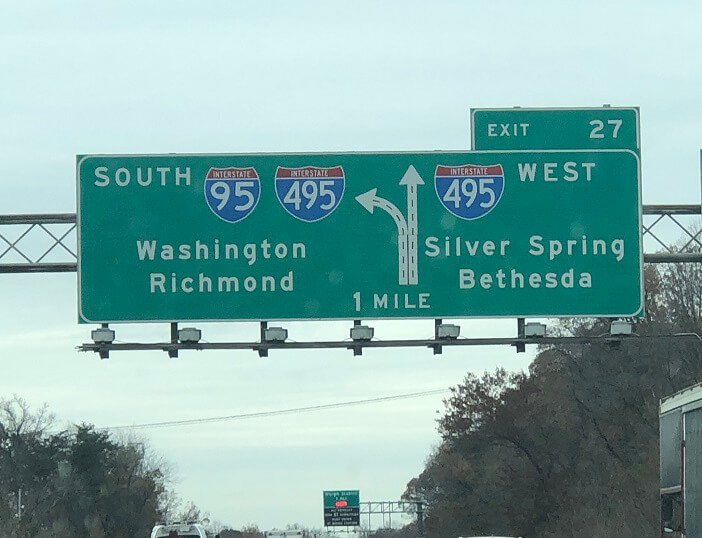The Capital Beltway and other Maryland interstates have become speedways during the COVID-19 pandemic. Photo by Angela Breck
The Washington, D.C., area is rich in culture, culinary options and things to do, just a few hours drive away from a vacation in the mountains, the forest or the beach. The problem for many people is that you also have to be increasingly rich to afford to live there.
That’s one of the reasons the region is seeing a decline in optimism for the future, at least according to a Gallup poll released last month.
The survey found that 27% of people said they were worried about making their rent. That was more than three times the amount who expressed the same concern the last time the survey was taken just before the pandemic, in 2020, when 8% said they were worried.
Gallup surveyed more than 2,800 people in the region, and the survey had a margin of error of plus or minus 2.8%.
The survey was conducted for the Greater Washington Community Foundation, which found that only 52% of the region would say they’re thriving right now. Another 44% are struggling, and 4% say they’re suffering.
“The No. 1 predictor of whether someone is thriving is whether they feel like they belong in their community — whether their community is a great place for people like them,” said Darius Graham, the managing director of community investment for the foundation.
He said compared to 2020, that number has gone down a bit.
All of that isn’t to say that people are down in the District and surrounding areas. Far from it, in fact.
A majority of those surveyed in every part of the region said they believed they were better off today than their parents were at their age. And over 70% of people said they felt the Washington metro area was good for families with children, or for people like themselves.
Majorities agreed with that notion across all demographics, regardless of residents’ sexuality, gender, race or cultural background.
But the survey found significant numbers of people struggling to afford housing, food, medicine and other basic needs, and concern about how high up the economic ladder they can climb. The numbers show that concern has grown even higher among Black and Hispanic residents.
Graham said there is also less of a connection among people who feel like local governments are responding to their voices and needs.
“More people feel like they have little or no influence over local government decision making,” Graham said. “That feeling of no influence, or little or no influences, has been a big factor for this report.”
“It’s those things taken in totality. People viewing that they don’t have a voice, that changes are not benefiting them or people like them, that really drives this overall lack of optimism,” he added.
As part of Maryland Matters’ content sharing agreement with WTOP, we feature this article from John Domen. Click here for the WTOP News website.
The post Survey shows rising costs, other factors, lead to declining optimism in D.C. area appeared first on Maryland Matters.

